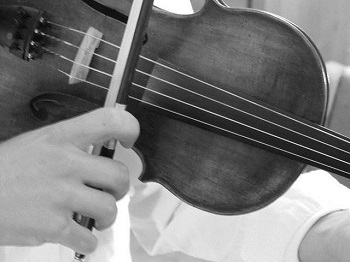This traditional activity for children can now bring on a 3D experience through mobile devices.
There isn’t anything new about having a child sit down with a box of crayons to bring a color to a black and white image in a coloring book, but researchers have now added augmented reality to the experience that could allow kids to see a three dimensional version of their projects through the screens of smartphones or tablets.
With the right AR app, the drawing is monitored and a child can enjoy an enhanced experience from the activity.
For example, if a child were to fill in a coloring book image of an elephant, just as he or she usually would, the augmented reality would make it possible for the colors to be filled in on a tablet or smartphone screen in real-time and can bring an animated, 3D version of that elephant to life on the device screen. That animation is then integrated into the video that the child can watch.
The augmented reality app maintains its core focus on the typical coloring activity while enhancing what is viewed.
 On top of the image the child is coloring, it creates an AR overlay on top of reality that enhances the engagement between the child and the image being colored. The preliminary user testing conducted by researchers was conducted with adults instead of children. What they determined was the majority of users said that their motivation for drawing within the coloring books was increased through the use of the app. In fact 80 percent of the participants in this study said that using the mobile app increased the connection that they felt with a character in the book.
On top of the image the child is coloring, it creates an AR overlay on top of reality that enhances the engagement between the child and the image being colored. The preliminary user testing conducted by researchers was conducted with adults instead of children. What they determined was the majority of users said that their motivation for drawing within the coloring books was increased through the use of the app. In fact 80 percent of the participants in this study said that using the mobile app increased the connection that they felt with a character in the book.
The researchers were from ETH Zurich, the EPFL university in Switzerland, and from Disney. They made a presentation of this new AR technology based experience in Fukuoka, Japan, at the IEEE International Symposium on Mixed and Augmented Reality (ISMAR 2015).
While the research is currently being shared primarily within scientific circles, it has already made its way through the tech transfer process, which has already brought to life the Disney Publishing Worldwide and Bendon partnership augmented reality product that was launched earlier in 2015, called “Disney Color and Play”.
Denny |
December 30, 2014
A recent study revealed that using a smartphone creates similar responses as learning a musical instrument.
While learning how to send and receive texts on mobile technology such as a smartphone may not be as challenging to most people as learning to play a musical instrument, a recent study has revealed that these two practices could have quite a bit in common when it comes to the brain patterns that they produce.
Researchers have discovered that using a smartphone can impact the brain in a similar way to learning to play the violin.
The parts of the brain that guide finger movements are stimulated in the same way when using a smartphone with a touchscreen as they are when learning to play a musical instrument. Every part of the body is linked to a processing area within the brain that is known as the somatosensory cortex. That area in the brain is “plastic”, which means that they continue to change and develop throughout our entire lives. Therefore, when a person repeatedly practices playing the violin, the area that controls the fingers grows larger than it does in those who don’t play a musical instrument with their fingers.
Mobile technology use over touchscreens has now shown to produce growth of a similar nature.
 At the Institute of Neuroinformatics of the University of Zurich and ETH Zurich, researcher Arko Ghosh examined the impact of daily smartphone use on the plastic areas of the brain. Ghosh stated that “Smartphones offer us an opportunity to understand how normal life shapes the brains of ordinary people.”
At the Institute of Neuroinformatics of the University of Zurich and ETH Zurich, researcher Arko Ghosh examined the impact of daily smartphone use on the plastic areas of the brain. Ghosh stated that “Smartphones offer us an opportunity to understand how normal life shapes the brains of ordinary people.”
Ghosh’s team joined another team from the University of Fribourg. Together, they applied electroencephaolography (EEGs) to measure the brain activity within 37 people. Within that group, 26 people were touchscreen smartphone users. The remaining 9 people used cell phones with physical number keys.
While the jury is still out whether or not mobile technology such as smartphones are actually safe for overall health – with the body of conflicting evidence growing quite regularly – this study has suggested that in at least this one circumstance, the use of the devices with touchscreens can help to stimulate the brain and grow areas in a similar manner that is experienced by violin players. They determined that the growth was greatest in the specific part of the brain that is responsible for the control of the thumbs. The key difference between smartphone use and violin playing was that the growth occurred in the brain regardless of how long the user had been using the device. In the case of violin players, the growth depended on the age at which they began playing.
 On top of the image the child is coloring, it creates an AR overlay on top of reality that enhances the engagement between the child and the image being colored. The preliminary user testing conducted by researchers was conducted with adults instead of children. What they determined was the majority of users said that their motivation for drawing within the coloring books was increased through the use of the app. In fact 80 percent of the participants in this study said that using the mobile app increased the connection that they felt with a character in the book.
On top of the image the child is coloring, it creates an AR overlay on top of reality that enhances the engagement between the child and the image being colored. The preliminary user testing conducted by researchers was conducted with adults instead of children. What they determined was the majority of users said that their motivation for drawing within the coloring books was increased through the use of the app. In fact 80 percent of the participants in this study said that using the mobile app increased the connection that they felt with a character in the book.
 At the Institute of Neuroinformatics of the University of Zurich and ETH Zurich, researcher Arko Ghosh examined the impact of daily smartphone use on the plastic areas of the brain. Ghosh stated that “Smartphones offer us an opportunity to understand how normal life shapes the brains of ordinary people.”
At the Institute of Neuroinformatics of the University of Zurich and ETH Zurich, researcher Arko Ghosh examined the impact of daily smartphone use on the plastic areas of the brain. Ghosh stated that “Smartphones offer us an opportunity to understand how normal life shapes the brains of ordinary people.”